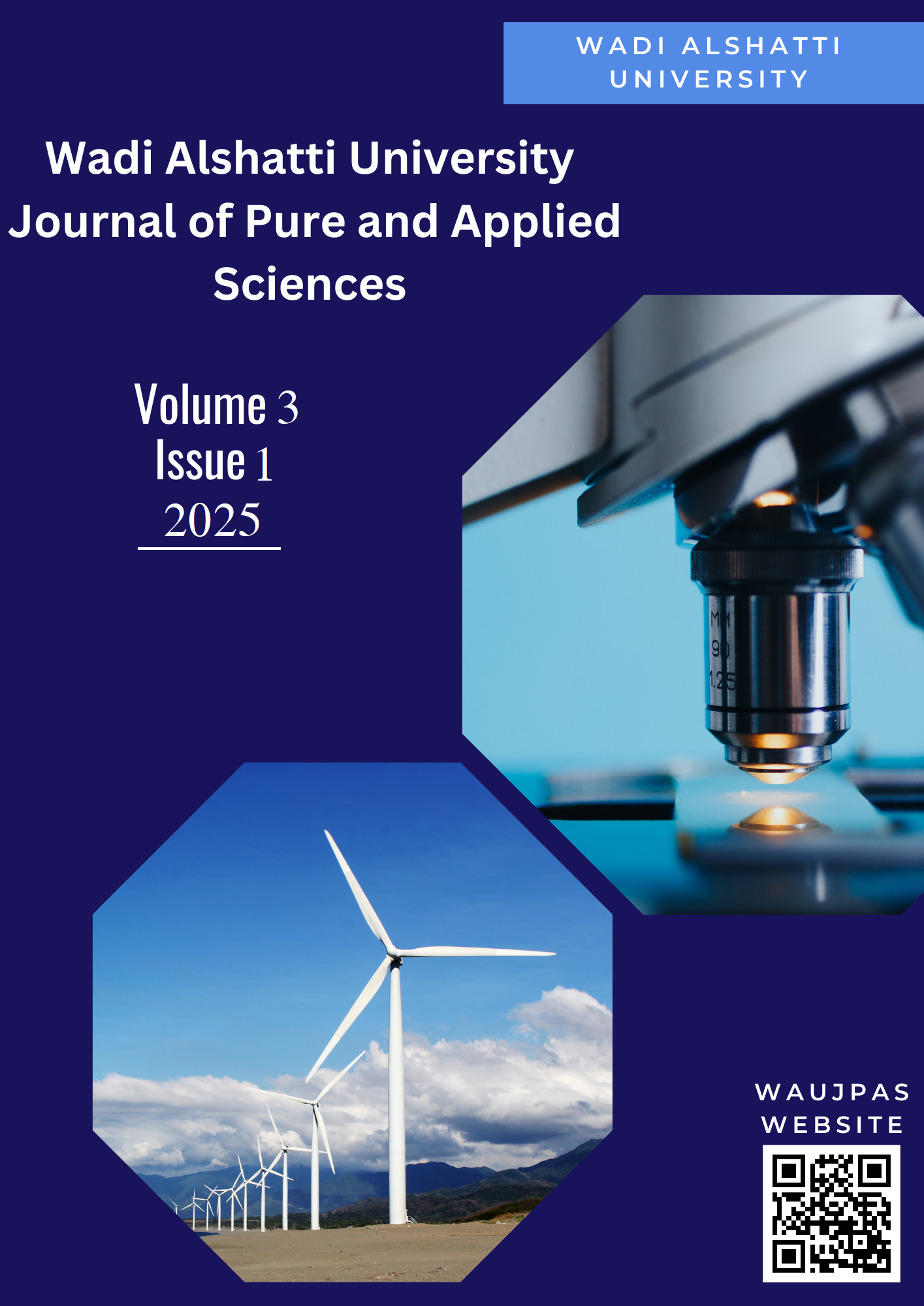Estimation of the Storage Capacity of Electric Vehicle Batteries under Real Weather and Drive-mode Conditions: A Case Study
DOI:
https://doi.org/10.63318/Keywords:
Electric vehicles, Energy Consumption Analysis, High voltage battery, Low voltage battery, Electric vehicle batteriesAbstract
In line with Libya's strategic shift towards renewable energy and efforts to reduce carbon emissions, and considering that the transportation sector is the second-largest contributor to environmental pollution after the electricity sector, this study aims to explore the feasibility of adopting electric vehicles (EVs) as a strategic solution to enhance environmental sustainability and reduce dependence on fossil fuels. This research analyzes the energy consumption of electric vehicles under real-world climatic and operational conditions, focusing on the impact of wind resistance, road incline, rolling resistance, and acceleration resistance on energy efficiency. The Brak-Sabha highway in southern Libya was selected as a case study, where an 83 km simulated journey over 60 minutes was assessed under four distinct weather conditions: stormy, cold, hot, and rainy, considering both daytime and nighttime driving. In the present stydy, the energy consumed in electric vehicles was classified into two levels: high voltage (400 volts) to operate the electric motor and its accessories, and low voltage (12 volts) to operate the auxiliary devices. The results indicate that wind resistance had the most significant impact on energy consumption, accounting for 74.8% of total resistance, followed by road incline (14.4%), rolling resistance (10.3%), and acceleration resistance (0.5%). The study also revealed that auxiliary systems, such as heating, cooling, and lighting, significantly increase energy consumption, reaching 3.61 kWh during winter nighttime driving, whereas the lowest recorded consumption was 1.86 kWh during daytime summer trips. In the worst operational scenario, total energy consumption surged from 18,476.63 Wh under normal conditions to 86,800 Wh, reflecting a 370% increase, emphasizing the substantial impact of extreme weather conditions on energy usage. The findings highlight the necessity of optimizing driving strategies and energy management to enhance electric vehicle efficiency and extend operational range.
Downloads
Downloads
Published
Issue
Section
License

This work is licensed under a Creative Commons Attribution-NonCommercial 4.0 International License.
This journal uses Creative Commons Attribution-Noncommerical 4.0 International License (CC BY-NC 4.0), which permits use, sharing, adaptation, distribution and reproduction in any medium or format, as long as you give appropriate credit to the original author(s) and the source, provide a link to the Creative Commons license, and indicate if changes were made. To view a copy of this license, visit https://creativecommons.org/licenses/by-nc/4.0/.
Copyright of articles
Authors retain copyright of their articles published in this journal.





